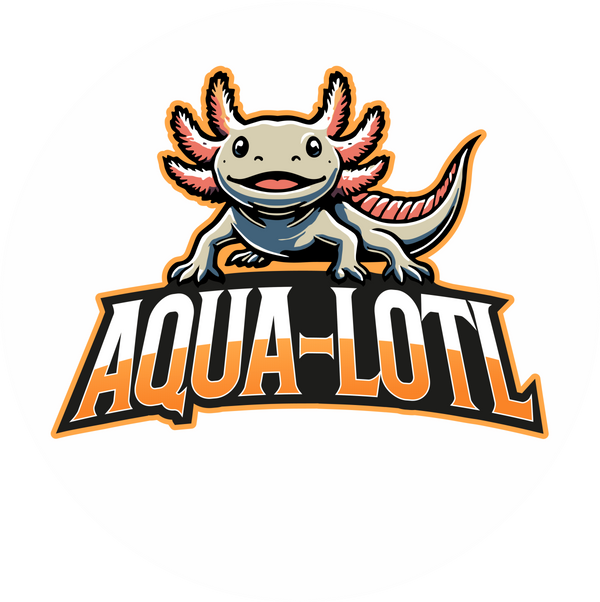Axolotl FAQs: Answers to the Most Common Beginner Questions
Share
If you’re new to axolotls, chances are you’ve run into a few questions that don’t always have clear answers. At Aqua-Lotl, we’ve worked with axolotls for years — and we’ve heard just about every concern new owners have.
In this post, we’ll break down the most frequently asked axolotl questions, with simple, direct answers you can trust.
🐟 Can Axolotls Live with Fish?
Short answer: No.
Axolotls are best kept alone or with other similarly sized axolotls. Here’s why:
Fish often nip at axolotl gills, causing injury or infection
Axolotls may try to eat small fish, which can lead to choking or internal damage
Tropical fish prefer warmer water — axolotls need cold water (60–65°F), so the needs don’t match
Other species are risky. Small shrimp are Ok. Guppies or endlers are OK but have been known to nip axolotls.
Please remember axolotls are known to eat shrimp, guppies and endlers so don’t be surprised it they go missing.
We also recommend a 30 day quarantine on any additions to your tank.
✅ Best practice: Keep your axolotl in a species-only tank with calm, cool conditions.
🎈 Why Is My Axolotl Floating?
Occasional floating isn’t always a problem — but frequent or prolonged floating can signal an issue.
Possible Causes:
Gas buildup (swallowed air while eating)
Overfeeding
Poor water quality (ammonia or nitrite spike)
Constipation or impaction (especially if you use gravel)
What to Do:
Test your water immediately (ammonia, nitrite, nitrate)
Stop feeding for 1–2 days and observe
Gently lower water level if floating is severe
Make sure you’re using safe substrate (no gravel)
⚠️ If floating continues for more than 48 hours, contact a vet or reach out for help.
🔥 Do Axolotls Need a Heater?
No! In fact, heaters can be dangerous.
Axolotls are cold-water amphibians that do best in:
60–65°F (15–18°C)
Temperatures over 70°F can cause:
Stress
Loss of appetite
Illness
Even death in severe cases
How to Keep the Tank Cool:
Use a small fan blowing across the surface
Float frozen water bottles in summer
Keep the tank in a cool room, away from direct sunlight
❌ Never use a standard aquarium heater unless treating illness under supervision.
🧽 How Often Should I Clean the Axolotl Tank?
Keeping your axolotl’s water clean is key to preventing stress, disease, and poor appetite.
Tank Maintenance Checklist:
✅ Daily:
Remove uneaten food within 20 minutes
Spot-clean waste using a turkey baster or siphon
✅ Weekly:
Do a 25–50% water change
Test your water (ammonia, nitrite, nitrate, pH)
✅ Monthly:
Rinse filter media in tank water (never tap water!)
Inspect for mold or hidden food under decor
Clean water = a healthy axolotl.
🍽️ Why Won’t My Axolotl Eat?
Axolotls refusing food can be frustrating — but it’s often a solvable problem.
Common Causes of Not Eating:
Stress (new environment, tank mates, loud noise)
Poor water quality (ammonia/nitrite issues)
Wrong temperature (too warm = lethargy)
Overfeeding or boredom (same food daily)
Illness or impaction
What to Try:
Test your water immediately
Offer a favorite food (like a live earthworm or blackworm)
Use feeding tongs to gently present food
Check for impaction if floating and refusing to eat
A healthy axolotl should eat every 1–2 days. If yours hasn't eaten for more than 5 days, seek expert advice.
🐾 Still Have Questions?
We’re here to help.
Check out our full [Axolotl Care Guide] or [Contact Us] if you’re stuck — no question is too small when it comes to keeping your axolotl safe and healthy.
